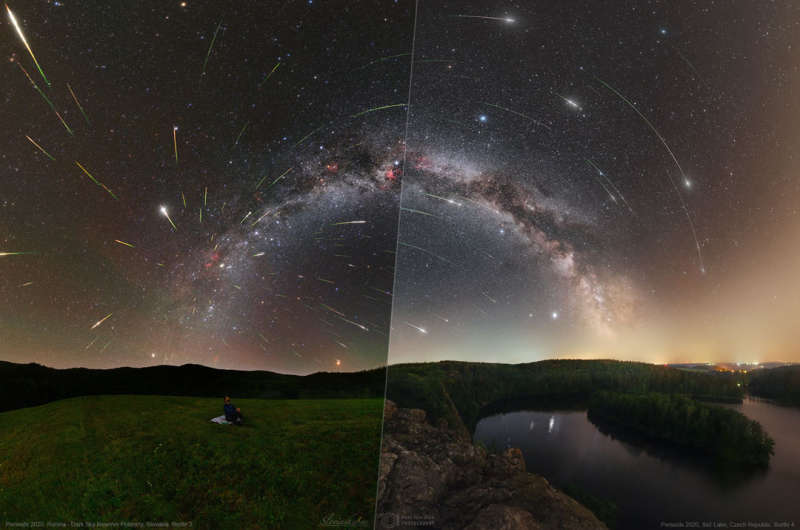
|
Credit & Copyright: Tomas Slovinsky
(Slovakia) &
Petr Horalek
(Czech Republic;
Institute of Physics in Opava)
Explanation:
What's the best way to watch a meteor shower?
This question might come up later this week when the annual Perseid Meteor Shower peaks.
One thing that is helpful is a dark sky, as demonstrated in the
featured composite image
of last year's
Perseids.
Many more faint
meteors are visible
on the left image, taken through a very dark sky in
Slovakia,
than on the right image, taken through a moderately dark sky in the
Czech Republic.
The band of the
Milky Way Galaxy bridges the
two coordinated images, while the meteor shower
radiant in the
constellation
of Perseus is clearly visible on the left.
In sum, many faint meteors are lost through a bright sky.
Light pollution
is shrinking areas across
our Earth with dark skies, although inexpensive ways
to
combat this might be implemented.
Notable Perseids Submissions to APOD:
2018,
2019,
2020
|
January February March April May June July August September October November December |
| |||||||||||||||||||||||||||||||||||||||||||||||||||||||
NASA Web Site Statements, Warnings, and Disclaimers
NASA Official: Jay Norris. Specific rights apply.
A service of: LHEA at NASA / GSFC
& Michigan Tech. U.
Based on Astronomy Picture
Of the Day
Publications with keywords: Perseids
Publications with words: Perseids
See also:
- APOD: 2025 August 21 Á Mostly Perseids
- APOD: 2025 August 20 Á Perseid Meteors from Durdle Door
- APOD: 2025 August 12 Á Perseids from Perseus
- APOD: 2025 August 3 Á Milky Way and Exploding Meteor
- APOD: 2024 August 12 Á Perseid Meteors over Stonehenge
- APOD: 2024 August 11 Á Animation: Perseid Meteor Shower
- A Perseid Below
